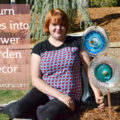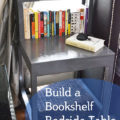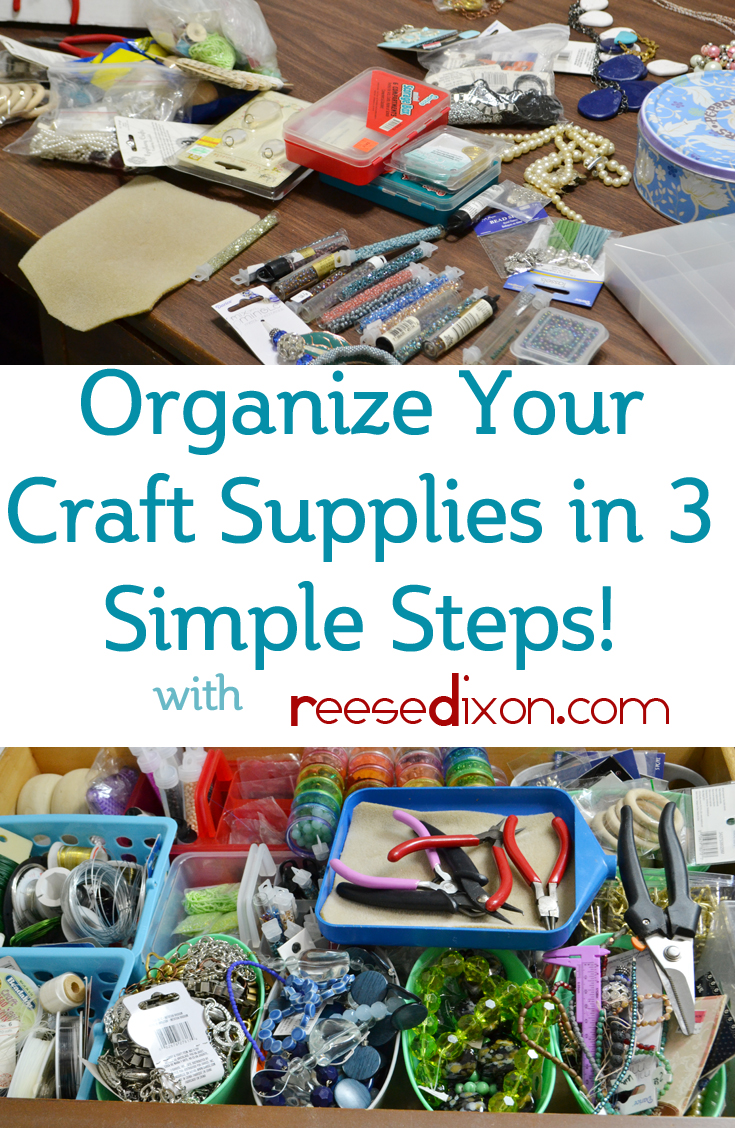
Keeping your supplies organized is a problem for every single creative person. And there are so many “solutions” on the market it can make your head spin. In fact, back in the day when I appeared on QVC, that’s what I was selling: a line of craft organizing tote bags. A company hired me to consult with them to develop the perfect system for organization that could go from home to crop night and back again. It was amazing, and then never ended up getting developed. But it doesn’t matter because you really don’t need all that stuff. A trip to the dollar store will work just fine.
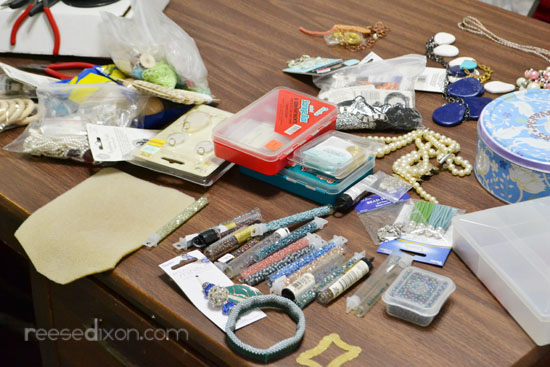
Because I craft using every possible method, I’ve got a whole lot of stuff to keep organized. And that means I have to do it in a very small space. I can only have one drawer full of jewelry supplies, because all the other drawers have to go to sewing stuff, painting supplies, glitter, all my many types of glue, polymer clay, stickers, diecuts, embellishments, fabric, yarn, blahblahblah. I have to be super strict with how much I keep around.
My beading drawer had gotten completely away from me, so it was time to take action. Anytime you organize anything, you should start with doing a purge. For me and my craft supplies, that’s tough. Crafting is all about using materials in interesting ways, so since I can do something with just about anything, it’s hard to let go of something you see potential in. My rule is just to ask: Do I even like this? If the answer is no, I donate it. If the answer is yes, or even, “yes, if…” then I keep it and find a way to use my space more efficiently. Which means we’re ready to get to my organizing steps.

Step 1: Use your space efficiently by using containers that fit your supplies.
The wrong size bin can eat up a tremendous amount of precious space, but without bins or containers you’re left with an unsearchable mess. So the trick is to find a container that is big enough – but no more – to hold what you need it to hold. For a long time I was sorting my loose beads in embroidery floss containers, which worked great for awhile. But I was wasting a ton of vertical space because each of those cubbies was barely 1/4 full. I found the rainbow pill cases at the dollar store and they were perfect for holding beads in without any extra room. If I had more beads than could fit in one cubby, I just added a second, and each one was still small enough to fit in a much more compact space. I can stack these pill cases all the way to the top of the drawer and still access them easily without taking every other thing out.
The caddies I also got at my dollar store and these work beautifully because they solved a bunch of problems at once. When I buy beads in a tube, I like to keep them there. All the information is on them in case I need to buy more, it’s a container that fits the beads exactly, and they’re really easy to work with. But the tubes are a pain to store in a drawer because they roll everywhere and get lodged in crannies. The caddies keep them altogether, and they’re easily portable. The tube beads tend to be the ones I use when I do bead weaving, so I can just pop out that caddie and take it where I’m working without having to have a secondary organizational trick to keep them together outside the drawer.

This bead box is one I inherited, and I decided to keep it because it was using up all the space it was taking up. You can see how each of those cubbies is stuffed full with faux pearls, and it’s great to keep them altogether in one place.

Step 2: Divide your supplies by how you would go looking for them.
Here’s how my organizing hierarchy works. FUNCTION -> MATERIAL -> COLOR.
First and foremost I consider what I’m using the item for. For the seed beads I mentioned above, I kept the ones I use for weaving separate from the ones I use for stringing. They have different purposes, so they shouldn’t get mixed together. This box contains all my findings. All the little pieces that aren’t for looks, but for making the jewelry funtion. Closures, earrings, jump rings, etc. They are all metal and so could go in a metal section, but if I need to find a closure, my instinct would not be to sort through metal beads, it would be to look for the closures. Function usually trumps material.

But if you have enough of one kind of function, then you can divide them further according to material. Like I have here. Two bins full of materials I use for stringing. Wire, elastic, threads, and more. Since I have a lot of them, I add a secondary system of organization by dedicating one bin to wire, and one to everything else.

I used one of these little tubs to hold all my chains.

And then these three tubs hold the beads that are already strung. I could separate them by material if I was being strict, but when I want a bead I almost never go looking for a ceramic bead or a glass bead. I look for a green bead. So these tubs are organized by color.

Step 3: Arrange things based on how often you’ll use them.
Pride of place should be given to the items you use everyday. If you put something you reach for often in the back of the drawer, you’re going to be wrestling with that drawer a whole lot. I like to think of the space as having three levels. Everyday, I’m Working on it, and I’ll Get to it.
These tubs hold wooden pieces and metal pieces that aren’t ready to be strung. If I go looking for these it will be to transform them before making something with them, and I don’t have any immediate plans for them. I’ll get to them, so they get put in the back corner of the drawer.
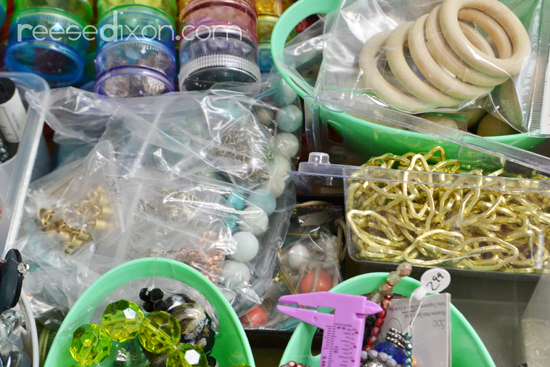
In the center section I put a bag full of my works in progress. I’m working on them. So they get to be closer to the front.
And then right up front are the beads I reach for first for my most frequent projects. They’re pretty much everyday, so they get right up front.
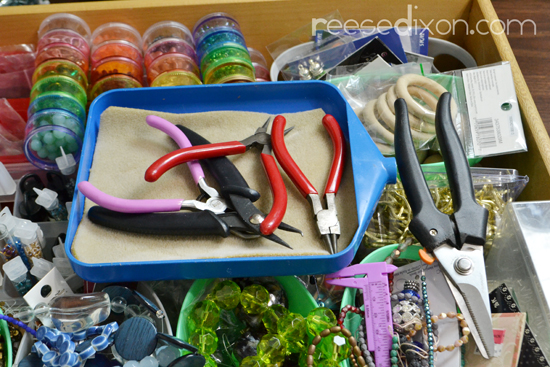
But even more common than the beads are my tools. There was just enough space left on top of the beads for my tray full of tools so I stuck those right on top. I could tuck them in somewhere if I really wanted it to look neat above all else, but I was much more concerned about workflow than looks. I never make a bead project without the tools, so it makes sense to put them in a place where I’d have to remove them before I looked at anything else, which also happens to be the most convenient place to put them away. It’s way easier to keep your workspace tidy if thing are easy to put away.
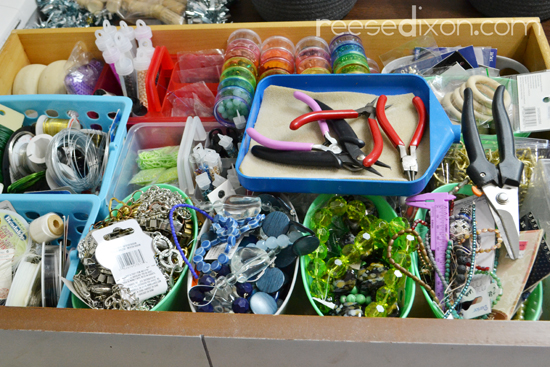
Now, without getting rid of nearly anything, my bead drawer is beautifully organized and accessible, and easy to keep that way. Because it makes sense according to how I work. If you have oodles of space then everything can just be pretty, but most people don’t have the room for everything to be displayed in its own mason jar. In the real world things need to be easy to find and easy to put back. And if you organize according to your workflow, they will be.


